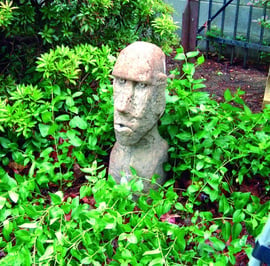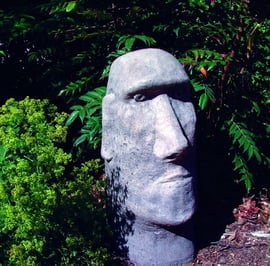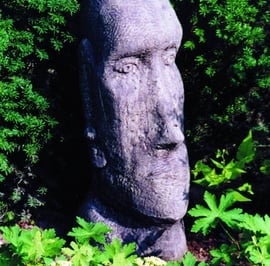Easter Island Heads
Add ancient character to your garden with our collection of stone Easter Island heads. Hand-cast in the UK from solid limestone, these heavy-duty Moai statues are designed to be permanent features. Fully frost-proof and weighing up to 80kg, they stand firm against strong winds and develop a natural, weathered patina over time.
Refine your selection
Free Shipping
Free UK Delivery to your Door.
30 Days Return
30 Day returns on all Orders.
Best Offers
Want to do a deal? Just call us and we will do our best deal for you!
Secure Payment
Secure online payments 24/7
Easter Island Head Statues: Ancient Mystery Meets Modern Gardens
Easter Island Head garden ornaments bring an air of ancient grandeur to modern outdoor spaces. These iconic Moai replicas stand as striking centerpieces, drawing inspiration from the original stone sentinels that have captured imaginations for centuries. Similar to our range of stone buddha statues, each piece adds character and presence to any garden setting.
Materials and Craftsmanship
Every Easter Island Head Stone Statue in our collection is carefully created using premium materials that withstand various weather conditions. These durable garden features complement other decorative elements such as our stone busts for your garden, offering lasting beauty and minimal maintenance.
Sizing and Placement Options
Our large Easter Island garden statues range from modest accent pieces to impressive focal points. Each size carries the distinctive characteristics of authentic Moai heads - prominent brows, strong features, and that unmistakable presence that makes Easter Island Maoi Heads so remarkable.
Your Questions Answered
Easter Island statues, known as Moai, represented deceased ancestors and chiefs of the Rapa Nui people. These monumental sculptures served as sacred connections between the living community and their revered ancestors, believed to channel supernatural powers called 'mana' for protection and prosperity.
While Easter Island and Stonehenge were built by different civilizations thousands of miles apart, both sites showcase remarkable ancient engineering capabilities. These monuments demonstrate how early societies moved and positioned massive stone blocks without modern technology, leading to ongoing discussions about prehistoric construction methods and cultural practices.



